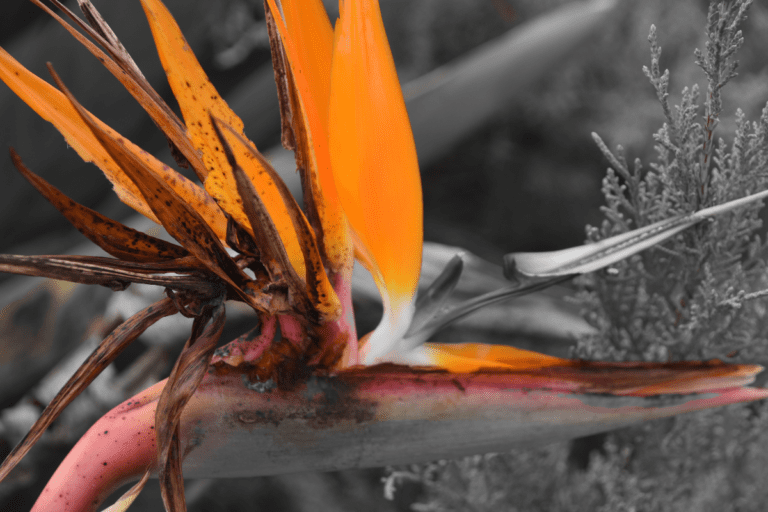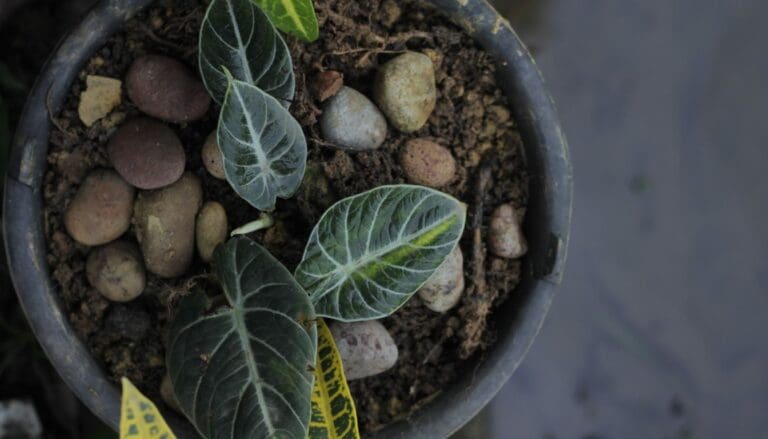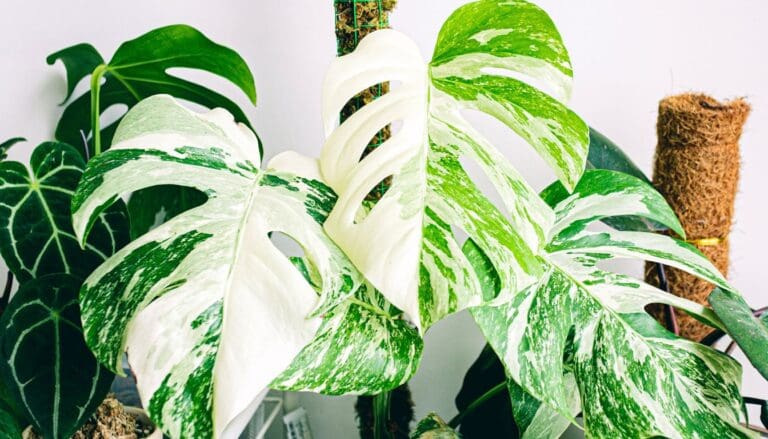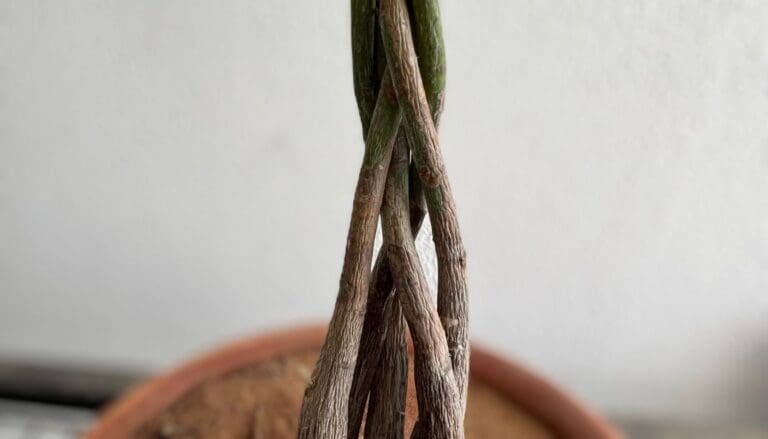How To Water Boston Fern? (How Often, How Much & More)
Boston Fern is a traditional indoor plant famous for its long and lacy fronds. They are easy to grow but shed leaves if they don’t get sufficient water and light. Watering Boston Fern is not a difficult task but knowing the correct process keeps them healthy.
Boston fern requires watering after every 2-3 days during its growing period. If they are growing outside, they will need watering almost daily or on alternate days because of being exposed to more sunlight and airflow. However, you must reduce watering frequency during the winter.
Reduce watering during the autumn and winter as they slow down their growth during this time.
Today, we will discuss the watering requirements of Boston Fern in detail. If you are a beginner, this guide will help you with how to water a Boston Fern correctly.

Please note: Simplify Plants is reader-supported. Some links in the post are affiliate links and I get a commission from purchases made through links in the post.
Will scheduled watering work for Boston Ferns?
Generally, Boston Ferns require regular watering during spring and summer.
You can water them less during the winter.
Additionally, their watering need differs indoors and outdoors.
So, a single watering schedule won’t work for them.
If you follow the summer watering schedule for winter, it will cause overwatering or root rot.
In the case of the opposite, the plant will suffer dehydration.
That is why it is better not to rely on a strict routine.
If you have excelled in understanding the plant’s watering needs, make and follow a routine accordingly.
But as a beginner, water the Ferns after checking the moisture level.
The best way to understand the plant’s watering needs is to check the soil’s moisture level.
If the top 2 inches of the soil feels dry, a Boston Fern is ready to take more water.
Once you excel in checking, you will understand and know the gaps required between each watering and then follow up a routine accordingly.
Boston fern water requirements
Boston Ferns belong to the tropical areas of South and Central America.
They grow in moist jungle soil in their natural habitat.
Based on this information, you should keep the soil of these Ferns slightly moist most of the time.
Never let the soil dry out completely when you start the next watering.
While you perform the next watering, the soil must remain slightly moist below 2-3 inches from the top.
Only the top 1-2 inches will be dry when you water them next.
When you water the Boston Ferns, you should soak the soil completely from top to bottom.
If you give them water in small amounts daily, only the top layer of the soil will get wet.
If the water doesn’t reach the bottom of the container, the roots will remain dry.
Water the Boston Ferns from above, close to the soil.
This will allow minerals like calcium or magnesium to accumulate in the upper layer of the soil and prevent them from reaching the roots.
If your container has a saucer beneath it, always clear the saucer from time to time.
Otherwise, this water can dampen the soil and cause overwatering and root rot. Emptying the saucer is most important in the winter.
In between the watering cycles, keep checking the moisture level, especially during the spring and summer, as it is their growing season.
Use your fingertip or lift the container to see whether they need water or not.
You can also use a moisture meter for checking the soil’s moisture level.
Never let the soil entirely dry as it is an easy way to kill the plant.
how often to water boston fern?
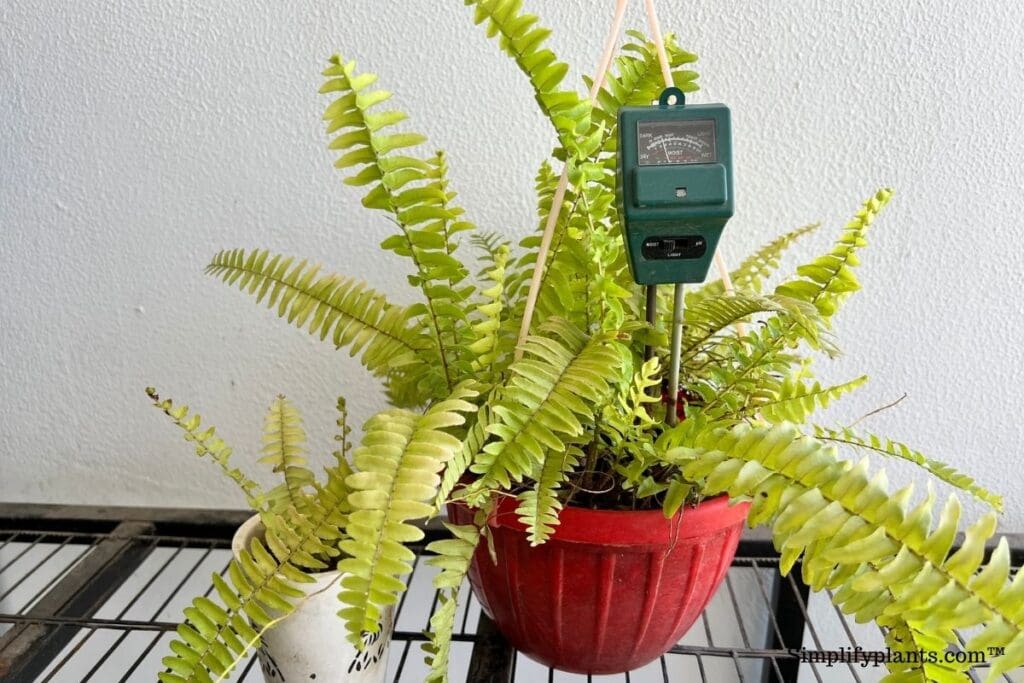
Generally, Boston Fern requires watering after every 2 to 3 days.
But, the frequency of watering changes depending on various factors.
Let’s see which factors determine the frequency of watering Boston Ferns:
Indoor watering
Belonging to the tropical regions of South and Central America, Boston Ferns enjoy a humid and tropical environment and grow over moist jungle soil.
You must provide enough water to the Boston Ferns and mimic their growing environment to keep them healthy.
Check the soil frequently and provide them with water accordingly to maintain a correct watering routine.
If you are growing Boston Fern indoors, you should water them once every 2 to 3 days.
Without water, they will wilt and die.
It will happen even if they remain slightly over-dry.
Continue watering until it begins to drain out of the potholes.
Watering will get enhanced when you provide them with a humid environment.
So, maintain the frequency suitably.
Outdoor watering
Boston Ferns enjoy growing over moist ground and love tropical environments.
They are not very much fond of drought conditions for prolonged periods.
Their soil must remain consistently moist.
But that doesn’t mean they should stand over soggy soil.
When Boston Ferns grow outdoors, they receive sufficient bright light and airflow.
These two can dry out the soil faster.
So, based on this situation, these Ferns will need to be watered daily, especially during the spring and summer.
The container plants require more water because they drain out the drainage holes.
You must check the soil moisture daily and provide water accordingly.
Sometimes, Boston Ferns will require watering for the 2nd time on the same day if the weather is extremely dry and scorching.
Summer watering
If your Boston Fern is inside during the summers, water them every 2-3 days to moisten the soil.
If they are outdoors, water them daily because they will get exposed to the uncontrolled hot and sunny environment.
And this environment will quickly dry out the soil.
If your Boston Ferns are in containers outside, they might require more frequent watering because half of the water will drain out of the potholes.
You must check the soil moisture frequently during the summers.
Sometimes, they might require watering twice a day to remain hydrated, especially if the weather is very sizzling.
Do the main watering in the early morning.
Winter watering
The Boston Fern will slow down their growth or go dormant in winters.
In that case, they will take time to absorb the water.
Due to the low evaporation rate, the soil too will take time to dry out.
In such weather, you should not water the Boston Ferns as you used to water in their growing seasons.
But, you cannot stop watering because they will need to remain moist and hydrated.
You should provide them with water every couple of weeks, for example, 1-2 weeks.
However, you must check the soil moisture before providing the water.
When the top 1-2 inches are dry, you can give the plant water.
You can give a deep watering soak with lukewarm water.
It will make the plant perfectly hydrated. It will also force pests to leave the plant, if any.
Propagated Boston Ferns
To get more Boston Ferns without buying, you can propagate them through division or using the running developed shoots.
After propagation, keep the soil slightly moist and not waterlogged.
These plants will need much less water than mature plants. So, don’t just pour watering uncontrollably.
Watering Boston Ferns before and after repotting
Boston Ferns need to be repotted every few years because they spread a lot.
When you repot the Boston Ferns, water them some days before the repotting. It helps to take the plant out easier.
After repotting, water them very well to moisten the soil properly.
Humidity levels

The Boston Ferns will quickly lose moisture and face frequent dehydration if the humidity is too low.
Belonging to tropical areas, you must maintain high humid levels around the Ferns.
Otherwise, you will have to increase the frequency of watering.
If the air is too dry, frequent watering will not work effectively for these Ferns.
Try misting your plant frequently to increase the moisture levels.
However, misting doesn’t work for long. Due to the dry air, the water will easily dry out.
Instead, fix humidifiers around them.
If the humidity around them remains high, just like in their natural habitat, you don’t have to water them now and then.
You can water the Ferns after every 2-3 days.
Sunlight levels
Generally, Boston Ferns don’t enjoy direct sunlight because they used to grow in forested regions under the shade of big plants.
Direct sunlight can burn the leaves.
If your Boston Fern is near a very bright area, the evaporation rate will be higher.
In that case, you have to water the plants more often.
But, under dappled or filtered light, you can follow the usual watering schedule.
Soil

Soil is an essential factor in deciding the frequency of watering Boston Ferns.
The soil’s ability to drain excess water and hold enough moisture can change watering frequency.
If you want the soil for this fern plant to drain the excess water well, use 2 parts peat moss, 1 part perlite, and 1 part vermiculite.
Another suggestion is 1 part standard potting mix and 1 part peat moss.
You need to reduce the watering frequency if the soil retains moisture for a long time.
On the contrary, you have to increase the frequency of the soil that drains water too fast.
This mostly happens when the soil contains a high amount of sand.
Like slightly moist soil, don’t use such high-draining ingredients as Boston Ferns.
Container size
The size of the container will determine how much soil the plant will stand.
The more soil, the more water it will hold.
So, to help the routine watering work successfully, you need to choose a container that matches the size of the plant.
Drainage holes
When you choose a container, check the drainage system.
Even if you follow the correct watering frequency, the soil will still get soggy due to the lack of drainage holes.
It won’t let the excess water drain out. Thus, it will stay in the soil and make it soggy.
This will result in overwatering and root rot.
How much water should I provide by Boston Fern?
Usually, there is no fixed amount of water to be given to Boston Ferns.
If they are in containers, they should be given enough water until it drains out of the drainage holes.
It soaks the soil greatly and keeps them hydrated.
The exact volume of water will depend on the size of the plant and the container.
However, if you still insist on knowing it, Boston Ferns approximately require 0.8 cups of water every seven days when they don’t receive too much sunlight and are standing on a 5-inch container.
I would still say that there is no fixed quantity of water to provide the Boston Ferns.
Continue pouring water until it drains out of the drainage holes.
What to do if a Boston Fern is overwatered?

Indeed the soil of Boston Ferns needs to stay moist always, but too much watering will result in overwatering.
You must allow at least 2 inches of the topsoil to dry out between the watering cycles.
Too much water will keep the roots damp and cause overwatering.
If the condition prolongs, it will result in root rot.
Signs of an overwatered Boston Fern are:
- Leaves turn yellow or wilted. It causes mainly in the lower fronds.
- Defoliation
- Over time, the leaves will have a mushy texture.
- The leaf tips will become brown.
- The soil will remain wet for a long time.
- The roots will rot and turn mushy and brown.
- In worse situations, the soil will release a foul smell.
How to fix overwatering?
- If you have caught the problem early, stop watering and allow the soil to dry.
- Once the soil is dry, adopt a new and appropriate watering schedule to bring the plant back to health.
- If the problem is severe, you have to repot the plant.
- Take the plant out of the container and remove the mushy and damaged parts, i.e., the mushy leaves and dark brown soft roots, because they don’t have any purpose left to serve.
- After removing the damaged parts, wrap the fern with a newspaper and let it dry for 24 hours.
- Choose a container with drainage holes to prevent the plant from suffering such issues.
- Take a new soil mix and plant the fern in it.
- If you have used proprietary potting materials, you don’t have to water the plant immediately because this soil will remain slightly damp.
- Let the plant settle down and start watering after 2-3 days.
What to do if my Boston Fern is underwatered?

While trying to save the Boston fern from overwatering, most gardeners, especially beginners, end with underwatering the Boston Ferns.
The signs of underwatered Boston Fern are:
- Leaves will turn brown.
- The edges of the leaves will feel crisp.
- The soil will be dry.
- The whole plant will start wilting.
- Excessive dryness will make the leaves fall off the plant.
How to save an underwatered Boston Fern?
- Give your plant a good drink. Water the plant until you see the excess water draining out.
- Never let the soil dry out completely during the watering cycle. The soil must remain consistently damp all the time.
- Always check the moisture level of the soil and water the Ferns when the top 2 inches are dry.
- You can also check it by lifting the container. The plant is not watered for some time if the pot is light to weigh.
- Sometimes, the soil you use drains water too fast. So, use soil that retains moisture for some time along with draining.
Some best watering techniques for healthy Boston Ferns
These techniques can reduce the complications of the plant related to watering and keep your plant healthy.
The fascinating fact is these techniques are easy to maintain.
Let’s have a quick look.
- While watering the Ferns, use a watering can with a long spout mouth. It will ensure that the water pours directly into the soil and doesn’t splash over the leaves, fronds, or other places.
- Use lukewarm water or room temperature water for Boston Ferns. Lukewarm water helps bring out the pests from the plant, if any. Never use cold water as that will shock the roots.
- Use distilled water or rainwater because they are pure and don’t have any harsh minerals as tap water has. Tap water contains chlorine, fluorine, bicarbonates, and other salts. These chemicals can turn the soil toxic, stop the plant from reaching its potential and even kill it.
You can also water them by performing bottom watering.
Place the whole potted plant in a container of water.
The water will get absorbed by the soil through the method of osmosis.
The problem happens when plants are in hanging baskets as the long, trailing leaves fall in the water and then drip when removed.
This process will take time because the soil will absorb the water through the drainage holes.
You must wait for at least 10-15 minutes and check the condition of the soil.
Remove the plant if the topsoil feels wet enough.
Keep the pot over a saucer for some time to drain the excess water and empty it from time to time.
Final words
As a beginner, you may consider Boston Ferns as fussy about watering. But, they are easy to care for once you get familiar with the watering needs and techniques.
For indoor plants, water every 2-3 days, and for outdoor plants, water daily. Follow this during the growing months. Sometimes, especially during the summers, you will have to water them twice a day if the weather becomes too scorching.
Reduce watering during the winters because they will slow down their growth and might even go dormant. But still, you cannot skip watering. You have to water them to keep the soil moist.
Don’t overwater. Always check the moisture level and water only when the top 2 inches are dry. Always use tepid distilled or rainwater.
How to understand when Boston Fern needs water?
The leaves will begin to curl and droop and have crispy edges.
These are some common signs that the plant needs water.
To confirm it more, lift the pot.
If it feels light, it is time to give them water.
Reference: University of Florida, The University of Arkansas Division, Texas A&M University System, The University of Georgia, University of New Hampshire, Wikipedia, The Royal Horticultural Society.
Recommended Garden Supplies
| Product Image | Our Recommended Gardening Supplies | Check Offers! |
|---|---|---|
Top Top
Top
Top
Top
Top
Top
Top
Top | rePotme Houseplant and Tropical Classic Potting Soil Mix | Check Offer On Amazon |
 Top
Top
Top
Top
Top
Top
Top
Top | Espoma Organic Indoor Plant Food | Check Offer On Amazon |
 Top
Top
Top
Top
Top
Top
Top
Top | GooingTop LED Grow Light 6000K Full Spectrum Clip Plant Growing Lamp | Check Offer On Amazon |
 Top
Top
Top
Top
Top
Top
Top
Top | Soil Moisture Meter | Check Offer On Amazon |
 Top
Top
Top
Top
Top
Top
Top
Top | Govee Hygrometer Thermometer, Bluetooth Enabled! | Check Offer On Amazon |
 Top
Top | LEVOIT Humidifiers for Large Room(Best For Plants) | Check Offer On Amazon |
 Top
Top
Top
Top
Top
Top
Top
Top | Upgraded DIY Automatic Drip Irrigation Kit, 15 Potted Houseplants Support | Check Offer On Amazon |
 Top
Top
Top
Top
Top
Top
Top
Top | Stainless Steel Heavy Duty Gardening Tool Set | Check Offer On Amazon |
 Top
Top
Top
Top
Top
Top
Top
Top | Bonide Insecticidal Soap | Check Offer On Amazon |
 Top
Top
Top
Top
Top
Top
Top
Top | Bonide 32 oz Spray Neem Oil for Organic Gardening | Check Offer On Amazon |
 Top
Top
Top
Top
Top
Top
Top
Top | Garden Safe Fungicide | Check Offer On Amazon |

